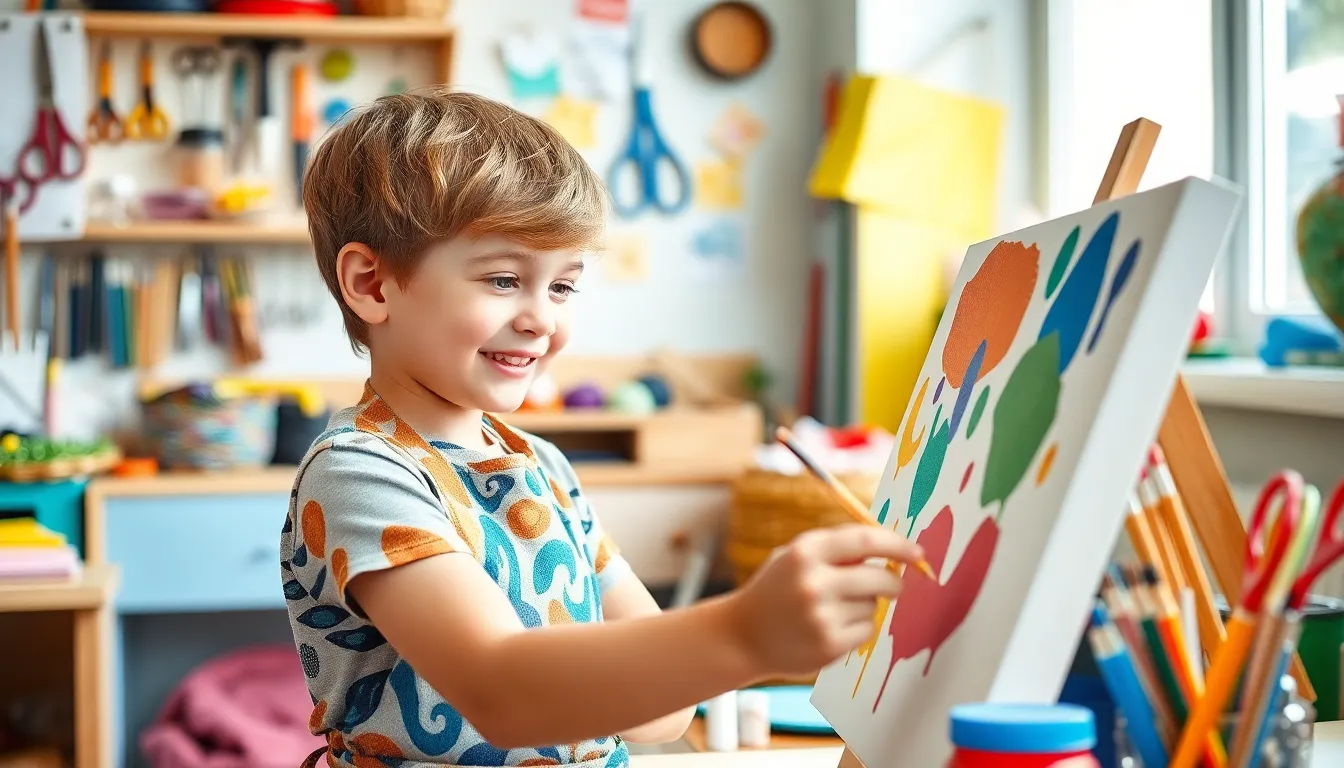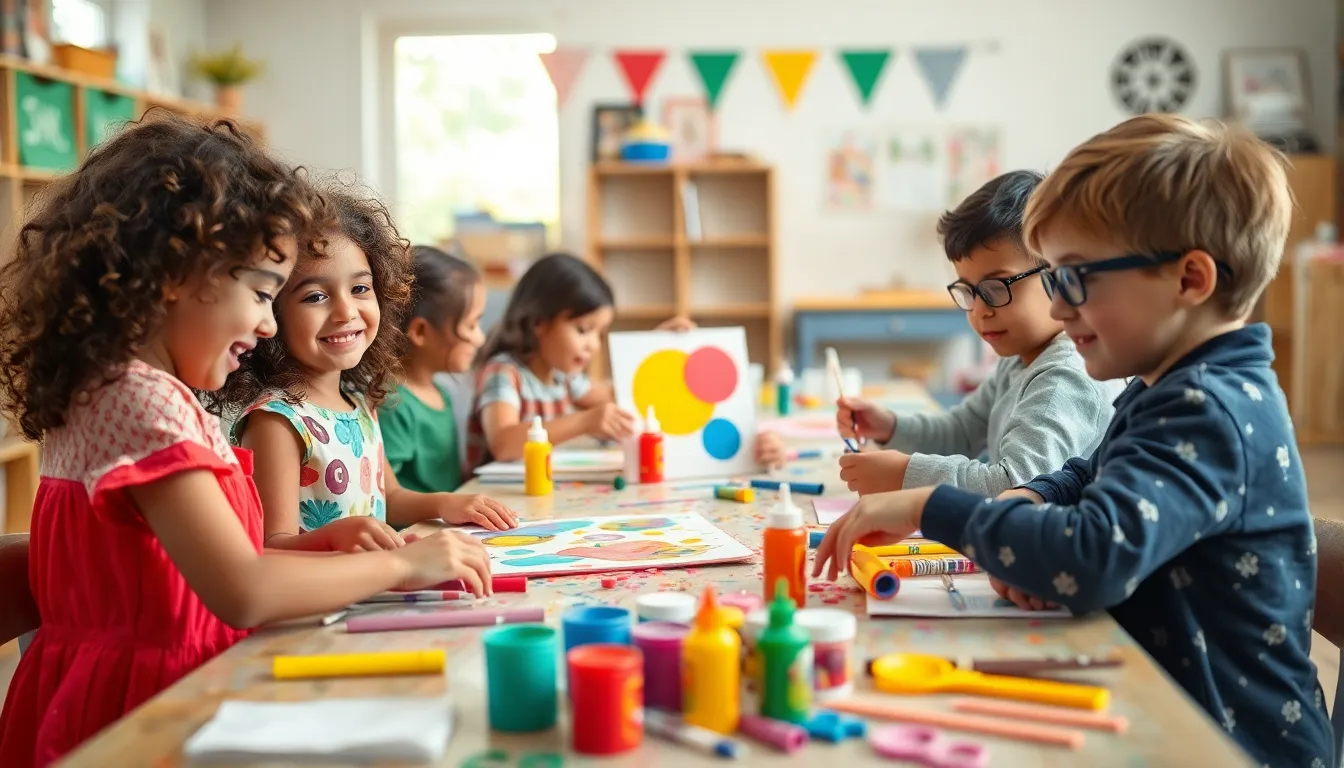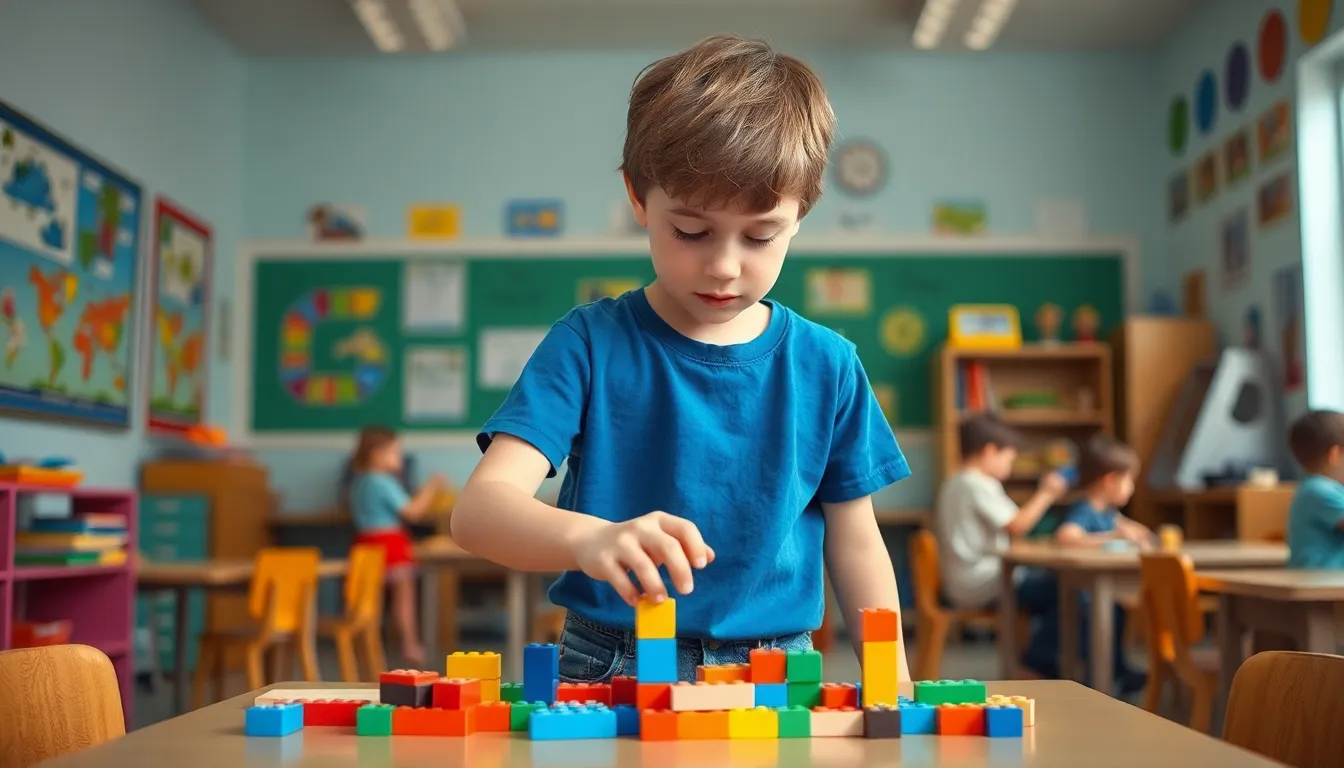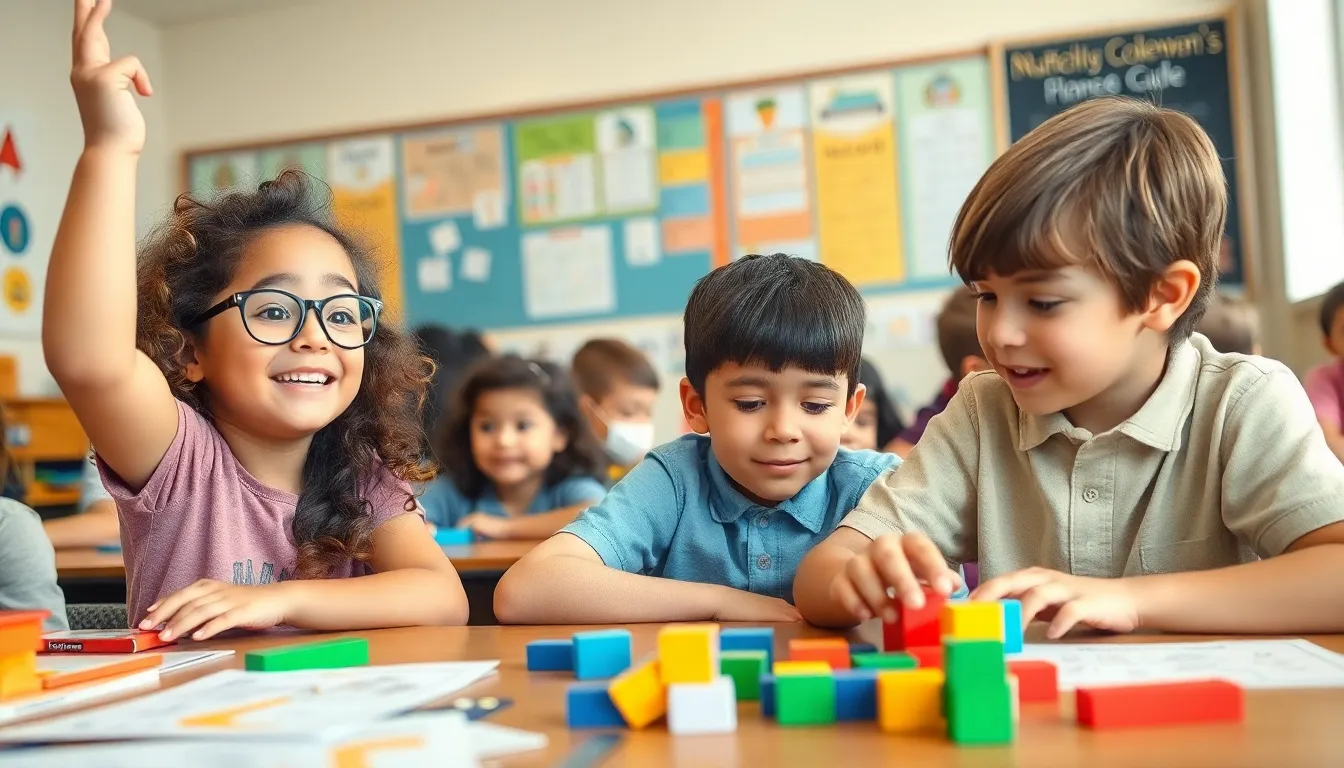Arts and crafts for kids aren’t just about glitter and glue; they’re gateways to creativity and imagination. Picture this: a rainy afternoon, a table covered in colorful supplies, and a child transforming into a mini Picasso. Not only do these activities spark joy, but they also help develop essential skills like problem-solving and fine motor coordination.
Table of Contents
ToggleOverview of Arts and Crafts for Kids
Arts and crafts activities serve as essential tools for childhood development. Creativity flourishes when children engage with materials like paint, paper, and clay. Various projects allow kids to express their thoughts and feelings visually.
Fine motor skills improve as children cut, glue, and manipulate materials. Problem-solving abilities get a workout when kids face design challenges. These experiences contribute significantly to critical thinking as children figure out how to achieve their artistic visions.
Social skills develop through group projects where teamwork and sharing play vital roles. Communication abilities also enhance as kids discuss their ideas and provide feedback to peers. Crafting promotes a sense of accomplishment, boosting self-esteem as children complete their projects.
Different types of arts and crafts activities can cater to diverse interests. Painting might appeal to those who enjoy working with colors, while modeling clay attracts tactile learners. Collectively, these experiences enrich children’s lives and foster important cognitive skills.
Integrating arts and crafts into everyday activities encourages continuous learning. Families can participate by setting aside time for creative sessions at home. Schools often incorporate arts and crafts into their curricula, recognizing their value in holistic education.
Kids who participate in art-related activities develop a broad skill set that aligns with various educational goals. Incorporating different mediums and techniques keeps engagements fresh and exciting. Not only do these activities provide entertainment, but they also lay the foundation for lifelong skills that benefit future endeavors.
Benefits of Arts and Crafts for Kids

Engaging in arts and crafts offers numerous benefits for children as they explore their creativity and develop essential skills.
Enhancing Creativity
Activities in arts and crafts bolster creative thinking. Children express their unique ideas through various media like paint, fabric, and clay. Projects encourage them to experiment, pushing boundaries and finding innovative solutions. With every creation, kids gain confidence in their artistic abilities, leading to increased self-expression. Expression of emotions occurs naturally as children visualize thoughts via imaginative artwork. Interactive art sessions with peers also inspire fresh ideas, enhancing collaborative creativity. Ultimately, opportunities to create and explore solidify problem-solving skills while nurturing a lifelong love for the arts.
Improving Motor Skills
Arts and crafts play a crucial role in developing fine motor skills. As children cut, glue, and paint, they strengthen hand-eye coordination and dexterity. Manipulating small items like beads or buttons requires precision, enhancing their ability to perform daily tasks. Engaging with various tools, such as scissors and brushes, fosters confidence in their handling abilities. Kids improve their grip and control while working with different materials. Regular participation in these creative activities leads to noticeable improvements in their overall motor skills. These foundational abilities serve as building blocks for more complex tasks, benefiting their academic and personal lives.
Popular Arts and Crafts Projects
Kids enjoy various arts and crafts projects that nurture creativity and skill development. These activities allow for exploration and self-expression.
Painting and Drawing
Painting and drawing offer endless possibilities for creativity. Children can use paint, markers, or crayons to visualize their thoughts. Various techniques like finger painting or watercolor enhance their artistic expression. Experimentation with colors boosts imagination and encourages unique ideas. Additionally, creating scenes or abstract art fosters interpretation skills. Regular practice improves their hand-eye coordination and fine motor skills. Group painting activities can promote teamwork and communication among peers.
Paper Crafts
Paper crafts provide a versatile medium for kids to create. Using paper for origami, collages, or cards allows children to explore different textures and colors. Cutting, folding, and gluing are essential skills that enhance dexterity and coordination. Following tutorials or creating original designs encourages critical thinking and problem-solving. Celebrating seasons or special events through paper crafts develops cultural awareness and reinforces community connections. Paper crafts also facilitate discussions about artistic choices, boosting children’s confidence in their creative decisions.
DIY Projects
DIY projects empower kids to build and design with their own hands. Engaging in projects like making simple toys or home decor helps develop engineering skills. Selecting materials teaches children about resourcefulness and enhances creativity. Basic tools and safe crafting techniques promote responsibility and safety awareness. Successful completion of these projects boosts self-esteem and pride in their achievements. Collaborating on DIY projects encourages teamwork as they share ideas and resources. Overall, these hands-on experiences lay a foundation for future problem-solving abilities.
Tips for Successful Arts and Crafts
Successful arts and crafts depend on thoughtful planning and the right environment. These elements significantly enhance children’s creative experiences.
Choosing the Right Materials
Select age-appropriate materials to ensure safety and engagement. Non-toxic paints, child-safe scissors, and sturdy paper provide a solid foundation for creativity. Craft kits offer a variety of supplies, catering to children’s diverse interests. Include items like glue sticks, markers, and textures like fabric or felt to spark curiosity. Variety encourages experimentation, allowing kids to discover their preferences. Prioritize quality over quantity; durable materials withstand enthusiastic use. Finally, try to incorporate recyclable materials to promote environmental awareness while crafting.
Setting Up a Creative Space
Design an inviting and organized workspace to stimulate creativity. Choose a flat, well-lit surface where children can spread out their materials comfortably. Incorporate storage solutions to keep supplies easily accessible while minimizing clutter. Include a mix of traditional and innovative tools to engage different artistic styles. Add inspiration visuals, such as sample artworks or project ideas, to motivate children. Ensure that the area is free from distractions, allowing kids to focus on their creative endeavors. Personalize the space; children often feel more inspired in a space reflecting their interests.
Embracing arts and crafts can significantly enrich children’s lives. These activities not only spark creativity but also enhance essential skills that contribute to their overall development. By engaging in hands-on projects, kids learn to express themselves while building confidence and improving fine motor skills.
Incorporating arts and crafts into daily routines creates a nurturing environment for exploration and collaboration. As children experiment with various materials, they develop problem-solving abilities and social skills that will serve them well throughout their lives. With endless possibilities for creativity, arts and crafts remain a vital component of childhood learning and growth.



